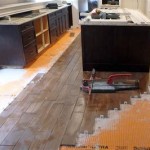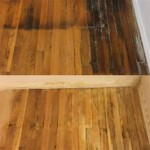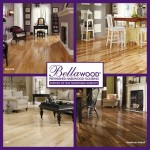Cost Difference Between Hardwood and Laminate Flooring
Selecting the right flooring for a home or office space involves careful consideration of several factors, including aesthetics, durability, maintenance, and, significantly, cost. Two popular choices are hardwood and laminate flooring, each offering distinct advantages and disadvantages. The cost difference between these two options can be substantial, influencing the overall budget of a renovation or new construction project. Understanding the factors contributing to these cost variations is crucial for making an informed decision.
This article will delve into the various elements that impact the price of hardwood and laminate flooring. It will explore not only the initial purchase prices but also the associated installation costs, long-term maintenance expenses, and potential resale value implications. By examining these aspects, readers can gain a comprehensive understanding of the true cost difference between hardwood and laminate flooring and make a decision that aligns with their budgetary constraints and lifestyle preferences.
Material Costs: The Foundation of Price Disparity
The most significant factor contributing to the cost difference between hardwood and laminate flooring lies in the materials themselves. Hardwood flooring, as the name suggests, is made from solid pieces of wood harvested from trees. The type of wood, its grade, and its thickness all contribute to the final price. Common hardwood species include oak, maple, cherry, and walnut, each possessing unique characteristics in terms of color, grain pattern, and hardness. Rarer or more exotic wood species, such as Brazilian cherry or tigerwood, command even higher prices due to their limited availability and unique appearance.
The grading of hardwood also plays a crucial role in determining its cost. Higher grades, such as select and better, exhibit fewer knots and imperfections, resulting in a cleaner, more uniform appearance. Lower grades, such as common grades, contain more knots and variations in color, making them more affordable but potentially less aesthetically pleasing to some. The thickness of the hardwood planks also influences the price. Thicker planks are generally more expensive but offer greater durability and can be sanded and refinished multiple times over their lifespan.
In contrast, laminate flooring is a synthetic product composed of several layers. The core layer is typically made of high-density fiberboard (HDF) or medium-density fiberboard (MDF). On top of the core layer, a photographic image of wood grain is applied, creating the visual appearance of hardwood. This image is then protected by a clear wear layer, typically made of melamine resin, which provides resistance to scratches, stains, and fading. Laminate flooring's construction using manufactured materials inherently makes it more affordable than solid hardwood.
The cost of laminate flooring varies depending on the thickness of the wear layer, the quality of the photographic image, and the density of the core layer. Laminates with thicker wear layers offer greater protection against wear and tear, making them suitable for high-traffic areas. Higher-quality photographic images provide a more realistic wood grain appearance, enhancing the overall aesthetic appeal of the flooring. Denser core layers offer improved resistance to moisture and impact, contributing to the longevity of the flooring.
Comparing the material costs directly, laminate flooring typically ranges from $1 to $5 per square foot, while hardwood flooring can range from $3 to $15 or more per square foot. This significant price difference makes laminate an attractive option for budget-conscious consumers.
Installation Costs: Hidden Expenses to Consider
Beyond the material costs, installation expenses also contribute significantly to the overall price difference between hardwood and laminate flooring. Hardwood flooring installation is generally more labor-intensive and requires specialized tools and skills. The installation process typically involves preparing the subfloor, acclimating the wood to the environment, and securing the planks using nails, staples, or adhesives. Depending on the type of hardwood and the complexity of the installation, professional installation costs can range from $3 to $8 per square foot or even higher.
There are different methods of installing hardwood flooring. Traditional solid hardwood is usually nailed or stapled to a wooden subfloor. Engineered hardwood, which consists of a thin layer of hardwood bonded to a plywood or fiberboard core, can often be installed using a click-lock system, which simplifies the installation process. However, even with engineered hardwood, proper subfloor preparation and precise cutting are essential for a professional-looking result.
Laminate flooring, on the other hand, is generally easier and less expensive to install. Many laminate products feature a click-lock system that allows the planks to snap together without the need for nails, staples, or adhesives. This makes laminate flooring a popular choice for DIY enthusiasts. However, even with a click-lock system, proper subfloor preparation is crucial. The subfloor must be level, clean, and dry to ensure a smooth and stable surface for the laminate flooring. Professional laminate flooring installation costs typically range from $1 to $4 per square foot.
The ease of installation with laminate flooring can lead to significant cost savings, especially for homeowners who are comfortable tackling the project themselves. However, it is important to note that improper installation can lead to problems such as buckling, warping, and squeaking. Therefore, even with laminate flooring, it's often advisable to hire a professional installer, particularly for large or complex projects.
Long-Term Maintenance and Resale Value Implications
The cost of flooring extends beyond the initial purchase and installation to include long-term maintenance expenses. Hardwood flooring, while durable, requires regular maintenance to preserve its beauty and longevity. This includes regular sweeping or vacuuming to remove dirt and debris, as well as occasional cleaning with a wood floor cleaner. Over time, hardwood floors may require refinishing to remove scratches, dents, and wear marks. Refinishing involves sanding down the existing finish and applying a new coat of stain and sealant. The cost of refinishing can range from $3 to $7 per square foot, depending on the extent of the damage and the type of finish used. However, refinishing can restore the floor to its original beauty and extend its lifespan for many years.
Laminate flooring is generally easier to maintain than hardwood. It is resistant to scratches, stains, and fading, and can be cleaned with a damp mop and a mild detergent. However, laminate flooring cannot be refinished. Once the wear layer is damaged, the flooring must be replaced. The lifespan of laminate flooring typically ranges from 10 to 20 years, depending on the quality of the product and the level of traffic in the area. While the initial cost of laminate is lower, the need for eventual replacement should be factored into the long-term cost considerations.
The type of flooring can also have an impact on the resale value of a home. Hardwood flooring is often seen as a premium feature that can increase the value of a property. It is a desirable feature for many homebuyers and can contribute to a positive impression of the home's overall quality and craftsmanship. Laminate flooring, while a practical and affordable option, may not have the same positive impact on resale value as hardwood. Some homebuyers may view laminate flooring as a less desirable alternative to hardwood, potentially impacting the perceived value of the home. However, high-quality laminates that closely mimic the appearance of hardwood can be a more acceptable option. The difference in perceived value depends heavily on the quality of the laminate and the overall market conditions.
Therefore, when evaluating the cost difference between hardwood and laminate flooring, it is crucial to consider not only the initial expenses but also the long-term maintenance costs and potential resale value implications. While laminate flooring may be more affordable in the short term, hardwood flooring may offer greater value in the long run, particularly in terms of durability, aesthetics, and resale value.
Ultimately, the decision to choose hardwood or laminate flooring depends on a variety of factors, including budget, lifestyle, aesthetic preferences, and long-term goals. By carefully considering these factors and weighing the cost differences between the two options, homeowners can make an informed decision that aligns with their individual needs and priorities.

Engineered Hardwood Vs Laminate

Laminate Vs Hardwood Flooring Major Differences Forbes Home

Engineered Flooring Vs Laminate Everything You Need To Know Forbes Home

Hardwood Flooring Cost 2024 Per Square Foot Mk

Laminate Vs Vinyl Flooring Costs Pros Cons Differences 2024

Laminate Vs Hardwood Flooring Which Is Better My Affordable

Cost To Install Laminate Flooring In 2024 Forbes Home

Engineered Wood Flooring Vs Laminate Pros Cons Costs

Hardwood Vs Engineered Wood Flooring Which Is Best For You Forbes Home

How Much Does Flooring Installation Cost 2024 Guide
Related Posts








